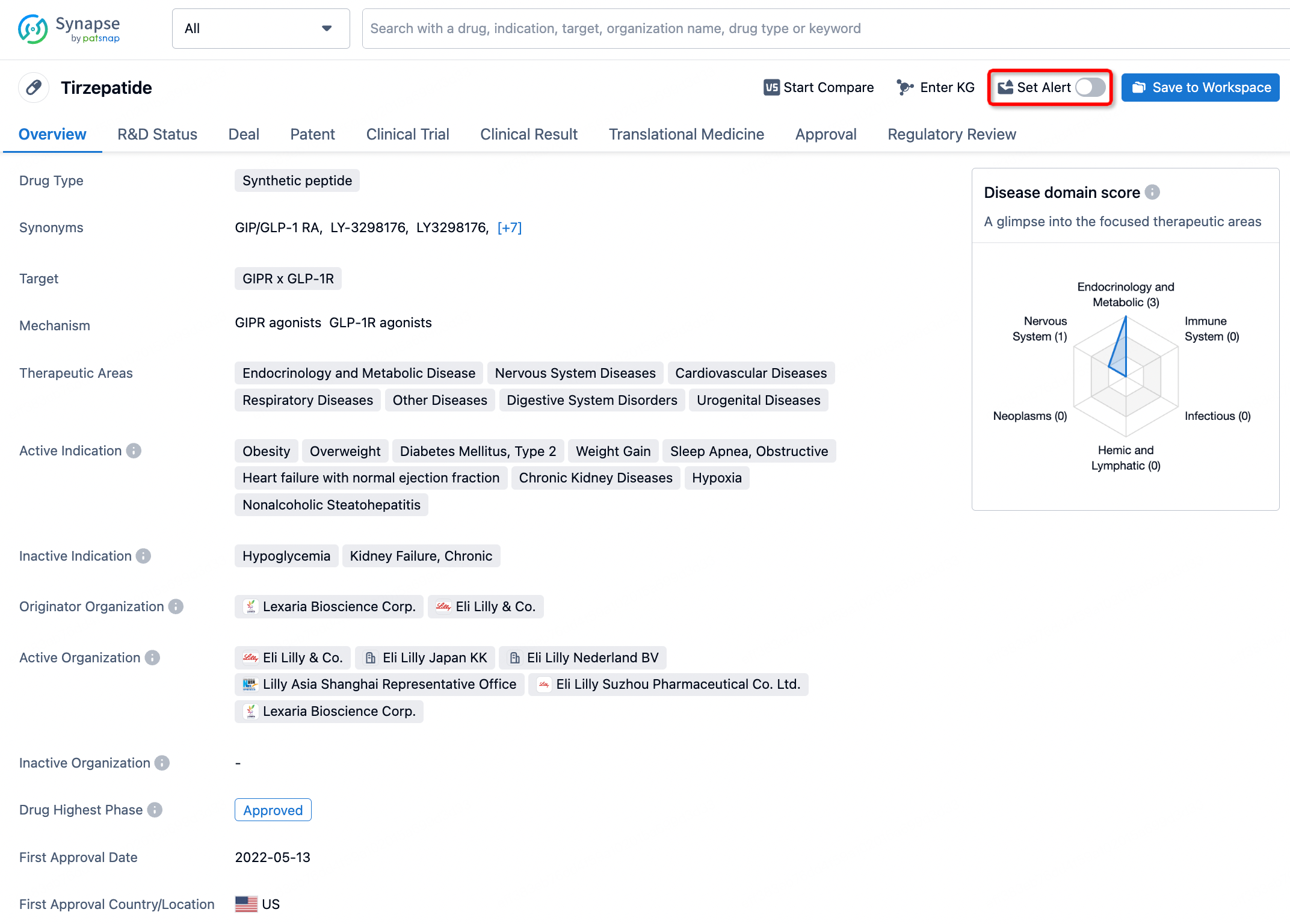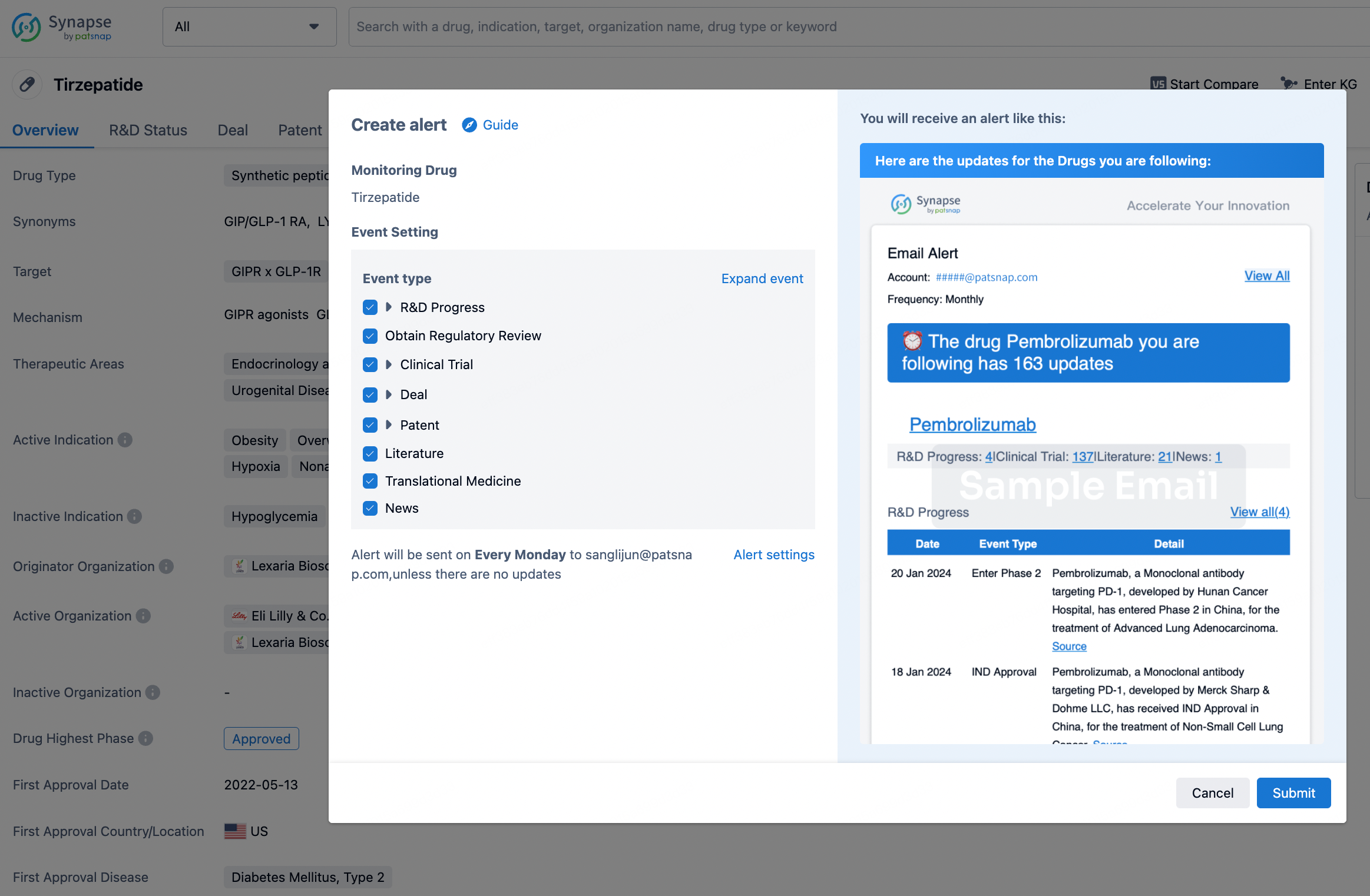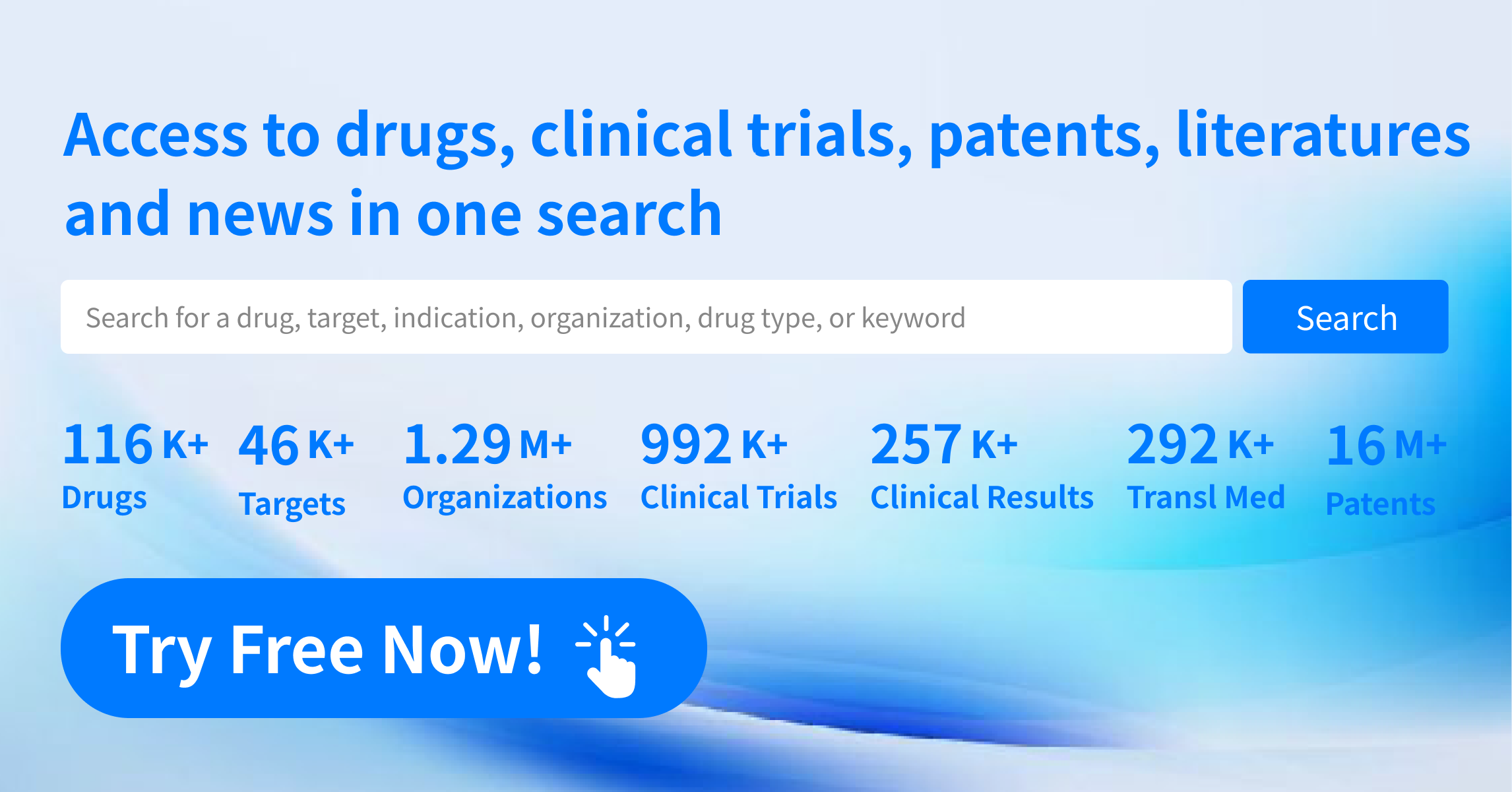Request Demo
What is Timiperone used for?
15 June 2024
Timiperone is an antipsychotic medication primarily used in the treatment of schizophrenia and other psychotic disorders. It is known under various trade names, including "Timiperon." This drug was developed by Sumitomo Dainippon Pharma, a Japanese pharmaceutical company well-regarded for its research in neuropsychiatric medications. Timiperone belongs to the butyrophenone class of antipsychotic drugs, which are known for their efficacy in treating severe psychiatric conditions. The drug was first approved in Japan and remains predominantly used in Asian markets, although its clinical applications are gradually gaining recognition globally. Timiperone is particularly noted for its efficacy in managing positive symptoms of schizophrenia, such as hallucinations and delusions. However, ongoing research is examining its broader uses and potential benefits in treating other psychiatric disorders.
Timiperone shares many pharmacological properties with other butyrophenone derivatives, such as haloperidol. It primarily targets dopaminergic pathways in the brain, particularly the D2 dopamine receptors. Dopamine is a neurotransmitter that plays a crucial role in regulating mood, cognition, and behavior. An overactive dopaminergic system is believed to contribute significantly to the symptoms of schizophrenia. By blocking D2 receptors, Timiperone reduces the excessive dopaminergic activity, thereby alleviating symptoms such as hallucinations, delusions, and thought disorders. Additionally, Timiperone exhibits antagonistic activity at serotonin receptors, particularly the 5-HT2A receptor. This dual action on dopamine and serotonin receptors contributes to its therapeutic efficacy and helps mitigate some of the side effects commonly associated with antipsychotic medications, such as extrapyramidal symptoms (EPS). Research into its precise mechanisms is ongoing, but these dual receptor activities are the fundamental basis of its therapeutic action.
Timiperone is generally administered orally in the form of tablets. The dosage and frequency depend on the condition being treated and the individual patient's response to the medication. For schizophrenia, the typical starting dose is around 6 mg per day, which can be adjusted based on clinical response and tolerability. It is essential to follow a healthcare provider's instructions regarding dosage adjustments. The onset of action for Timiperone can vary, but patients generally begin to notice improvements in their symptoms within a few days to a week of starting the medication. However, it may take several weeks to achieve the full therapeutic effect. Timiperone should be taken consistently at the same time each day to maintain stable blood levels and maximize its efficacy. If a dose is missed, it should be taken as soon as remembered, unless it is almost time for the next dose, in which case the missed dose should be skipped to avoid doubling up.
Like all medications, Timiperone can cause side effects. The most common side effects include drowsiness, dizziness, dry mouth, constipation, and weight gain. More serious side effects may include tardive dyskinesia, a condition characterized by involuntary movements, and neuroleptic malignant syndrome (NMS), a potentially life-threatening condition that requires immediate medical attention. Patients with a history of cardiovascular disease should use Timiperone cautiously, as it can affect heart rhythm. It is also contraindicated in individuals with severe liver or kidney impairment. Elderly patients with dementia-related psychosis treated with antipsychotic drugs are at an increased risk of death. Therefore, Timiperone is not approved for the treatment of dementia-related psychosis. Regular monitoring by a healthcare provider is essential to manage and mitigate these side effects effectively.
Timiperone can interact with other medications, which may alter its effects or increase the risk of adverse reactions. For instance, using Timiperone in conjunction with other central nervous system (CNS) depressants, such as benzodiazepines or alcohol, can amplify drowsiness and sedation, increasing the risk of accidents and falls. It can also interact with medications that affect heart rhythm, such as certain antibiotics and antifungal drugs, raising the risk of arrhythmias. Patients taking medications that induce or inhibit the cytochrome P450 enzymes, particularly CYP3A4, should exercise caution, as these can alter Timiperone metabolism, leading to either increased toxicity or decreased efficacy. Always inform your healthcare provider of all the medications, supplements, and herbal products you are taking to avoid potential interactions and ensure the safe and effective use of Timiperone.
In conclusion, Timiperone is a potent antipsychotic medication with a primary indication for treating schizophrenia and other psychotic disorders. Its mechanism of action involves dopamine and serotonin receptor antagonism, which helps alleviate the symptoms of psychosis. When using Timiperone, it is essential to adhere to prescribed dosages and be aware of potential side effects and drug interactions. Regular monitoring by healthcare providers can help optimize treatment outcomes and manage any adverse effects. As research continues, the full potential of Timiperone in psychiatric treatment may become even more apparent, providing hope for many individuals suffering from severe mental health conditions.
Timiperone shares many pharmacological properties with other butyrophenone derivatives, such as haloperidol. It primarily targets dopaminergic pathways in the brain, particularly the D2 dopamine receptors. Dopamine is a neurotransmitter that plays a crucial role in regulating mood, cognition, and behavior. An overactive dopaminergic system is believed to contribute significantly to the symptoms of schizophrenia. By blocking D2 receptors, Timiperone reduces the excessive dopaminergic activity, thereby alleviating symptoms such as hallucinations, delusions, and thought disorders. Additionally, Timiperone exhibits antagonistic activity at serotonin receptors, particularly the 5-HT2A receptor. This dual action on dopamine and serotonin receptors contributes to its therapeutic efficacy and helps mitigate some of the side effects commonly associated with antipsychotic medications, such as extrapyramidal symptoms (EPS). Research into its precise mechanisms is ongoing, but these dual receptor activities are the fundamental basis of its therapeutic action.
Timiperone is generally administered orally in the form of tablets. The dosage and frequency depend on the condition being treated and the individual patient's response to the medication. For schizophrenia, the typical starting dose is around 6 mg per day, which can be adjusted based on clinical response and tolerability. It is essential to follow a healthcare provider's instructions regarding dosage adjustments. The onset of action for Timiperone can vary, but patients generally begin to notice improvements in their symptoms within a few days to a week of starting the medication. However, it may take several weeks to achieve the full therapeutic effect. Timiperone should be taken consistently at the same time each day to maintain stable blood levels and maximize its efficacy. If a dose is missed, it should be taken as soon as remembered, unless it is almost time for the next dose, in which case the missed dose should be skipped to avoid doubling up.
Like all medications, Timiperone can cause side effects. The most common side effects include drowsiness, dizziness, dry mouth, constipation, and weight gain. More serious side effects may include tardive dyskinesia, a condition characterized by involuntary movements, and neuroleptic malignant syndrome (NMS), a potentially life-threatening condition that requires immediate medical attention. Patients with a history of cardiovascular disease should use Timiperone cautiously, as it can affect heart rhythm. It is also contraindicated in individuals with severe liver or kidney impairment. Elderly patients with dementia-related psychosis treated with antipsychotic drugs are at an increased risk of death. Therefore, Timiperone is not approved for the treatment of dementia-related psychosis. Regular monitoring by a healthcare provider is essential to manage and mitigate these side effects effectively.
Timiperone can interact with other medications, which may alter its effects or increase the risk of adverse reactions. For instance, using Timiperone in conjunction with other central nervous system (CNS) depressants, such as benzodiazepines or alcohol, can amplify drowsiness and sedation, increasing the risk of accidents and falls. It can also interact with medications that affect heart rhythm, such as certain antibiotics and antifungal drugs, raising the risk of arrhythmias. Patients taking medications that induce or inhibit the cytochrome P450 enzymes, particularly CYP3A4, should exercise caution, as these can alter Timiperone metabolism, leading to either increased toxicity or decreased efficacy. Always inform your healthcare provider of all the medications, supplements, and herbal products you are taking to avoid potential interactions and ensure the safe and effective use of Timiperone.
In conclusion, Timiperone is a potent antipsychotic medication with a primary indication for treating schizophrenia and other psychotic disorders. Its mechanism of action involves dopamine and serotonin receptor antagonism, which helps alleviate the symptoms of psychosis. When using Timiperone, it is essential to adhere to prescribed dosages and be aware of potential side effects and drug interactions. Regular monitoring by healthcare providers can help optimize treatment outcomes and manage any adverse effects. As research continues, the full potential of Timiperone in psychiatric treatment may become even more apparent, providing hope for many individuals suffering from severe mental health conditions.
How to obtain the latest development progress of all drugs?
In the Synapse database, you can stay updated on the latest research and development advances of all drugs. This service is accessible anytime and anywhere, with updates available daily or weekly. Use the "Set Alert" function to stay informed. Click on the image below to embark on a brand new journey of drug discovery!
AI Agents Built for Biopharma Breakthroughs
Accelerate discovery. Empower decisions. Transform outcomes.
Get started for free today!
Accelerate Strategic R&D decision making with Synapse, PatSnap’s AI-powered Connected Innovation Intelligence Platform Built for Life Sciences Professionals.
Start your data trial now!
Synapse data is also accessible to external entities via APIs or data packages. Empower better decisions with the latest in pharmaceutical intelligence.


